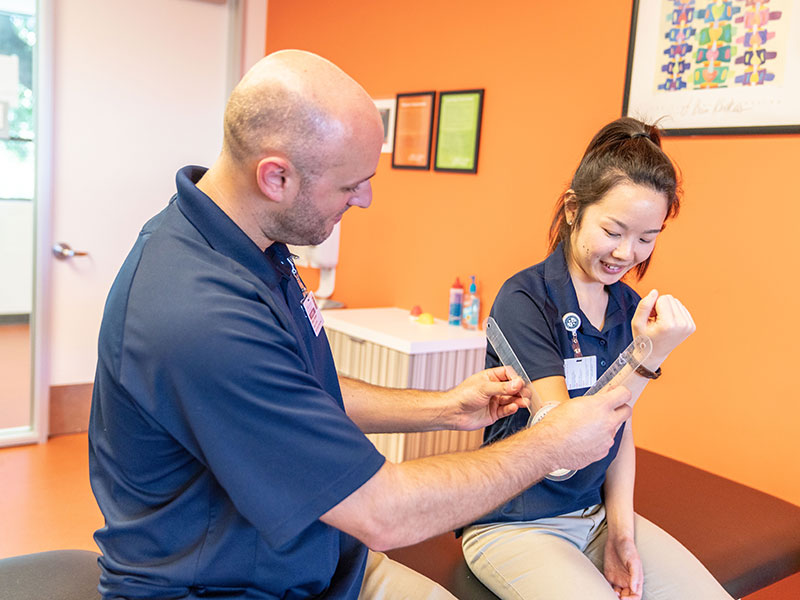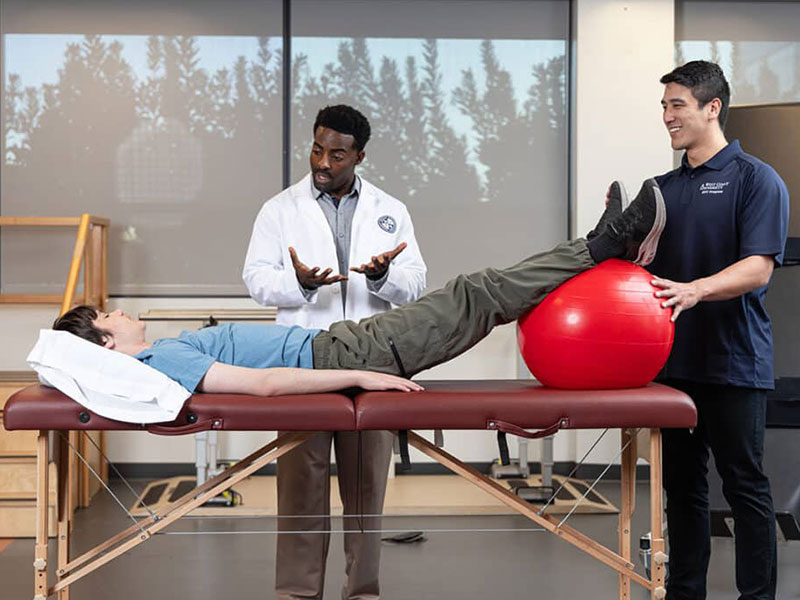How to Become a Physical Therapist in California


If you’re considering a career as a physical therapist, you’re embarking on a journey to change lives. Physical therapy is important work that helps individuals manage pain, improve mobility, and get back to living their everyday lives when they are dealing with injuries, illness, disabilities, or other physical hurdles.
Because of the critical role physical therapists play in helping to guide clients to recovery (physical therapists evaluate, diagnose, treat, educate, and track progress), it’s no wonder that they must adhere to extensive education, testing, and licensure requirements.
If you are pursuing a career as a physical therapist in California, you should be aware of what steps you’ll need to complete. In this physical therapist career guide, we lay out the steps and requirements for you.
Educational Requirements for Becoming a PT in California
To be eligible for licensure as a physical therapist in California, you will need to earn a Doctor of Physical Therapy (DPT) from a program that is accredited by the Commission on Accreditation in Physical Therapy Education (CAPTE). DPT programs typically take three years to complete, and applicants to these programs usually need a minimum of a bachelor’s degree to be accepted, according to the American Physical Therapy Association (APTA).
When selecting a Doctor of Physical Therapy (DPT) program, it’s important to look for one that provides you with the right level of hands-on training experience in simulated and real therapy settings so you’re better prepared to work in the field.
West Coast University offers a Doctor of Physical Therapy (DPT) program where students can put their learned skills to practice in a 16,000 sq. ft. learning space that is equipped with industry-current medical equipment. Students in the program also complete three internships prior to graduation, which offers invaluable real-world experience.
California Physical Therapist Licensure Requirements
The process for applying for your physical therapist license in California requires you to submit an online application and complete a series of additional steps in support of your application. One of the steps, which is passing your national and state exams, will be covered in greater detail in the next section. But in the meantime, here’s a quick list of the key steps you’ll need to take as part of the application process.
- Fill out an online application with the Physical Therapy Board of California (PTBC) via the BreEZe platform
- Have your DPT program validate your expected graduation date with the PTBC (can be done up to 90 days prior to graduation)
- Undergo a criminal background check
- Complete your Live Scan fingerprinting or a paper fingerprint card
- Submit a color, passport-style photo
- Pay a $300 for application processing and a $150 initial licensing fee
This is the general application process for U.S. educated physical therapist applicants (see the PTCB website for a more comprehensive list). Your required documentation and steps may differ if you are a different kind of applicant, such as a U.S.-educated PT applicant applying via an endorsement, a foreign-educated applicant, or an equivalency applicant. Look for the application steps that apply to you.
How long does it take for your license to be approved?
Once you apply for licensure, it will typically take about 30 days for the PTBC to acknowledge receipt of your application, and it usually takes about 45 days for your license to be issued, unless you’re eligible for expedited licensure.
Passing Your National and State PT Exams
If you plan to work as a physical therapist in California, you’ll need to pass both the national exam (the National Physical Therapy Examination, or NPTE) and the state exam (the California Jurisprudence Assessment Module, or CA JAM, though it’s also commonly called CAL-JAM). Below, we share a few facts you should know about both physical therapist exams that are required in California.

About the NPTE
The NPTE tests aspiring physical therapists’ basic competence for an entry-level physical therapist role after they graduate from an accredited program or from an equivalent non-accredited program. Here’s a quick glimpse of what the NPTE testing process entails and how to get started:
- Length: 225 multiple-choice questions (five sections of 45 questions)
- Duration: Five hours
- Passing score: 600
- Administered by: The Federation of State Boards of Physical Therapy (FSBPT)
- Testing location: a Prometric testing center
- Cost: $485 to the Federation and $100.30 to the Prometric testing center
- Test results timing: Free score report available 10 business days later in your FSBPT dashboard
- First step: Fill out the Federation’s NPTD journey map to understand the candidate’s best path to licensure.
- Resources:
You can visit the main NPTE page on the Federation’s website for additional information, such as what to expect on the day of the exam, test prep materials, how to get your results, and more.
About the CA JAM
The CA JAM tests candidates on the laws governing the practice of physical therapy in California. The exam is considered a test, but also a learning tool. This is because when a test taker gets an answer wrong, they are given a list of laws and regulations related to the question, and then they have one more chance to answer the question. Here’s some initial information to help you prepare for this state exam:
- Length: 50 questions
- Duration: 90 minutes
- Passing score: 80%
- Administered by: The Federation of State Boards of Physical Therapy (FSBPT)
- Testing location: Online
- Cost: $50 to the Federation
- Test results timing: Immediate – provided during the exam
- First step: Log in with your FSBPT ID to register for the exam on the Federation’s website.
- Resources:
- California Laws and Regulations Related to the Practice of Physical Therapy (study materials compiled by the PTBC)
- CAL-JAM Content Outline
The CA JAM can also be used to fulfill the two hours in ethics, laws, and regulations continuing competence requirements for licensed physical therapists in California. Learn more about the CA JAM on the Federation’s website and the PTBC’s website.
Keep in mind that you must be within 90 days of graduation to be eligible to sit for the NPTE and CA JAM.
Considering a Specialization in Physical Therapy

Once you become a licensed physical therapist, your education and professional growth doesn’t have to stop there. You can always advance your expertise by becoming certified in a specific specialty area of physical therapy.
APTA offers in these 10 physical therapy specialty area certifications:
- Cardiovascular and pulmonary
- Clinical electrophysiology
- Geriatrics
- Neurology
- Oncology
- Orthopaedics
- Pediatrics
- Sports
- Women’s health
- Wound management
Becoming a board-certified specialist can help you sharpen your skill set so you can provide greater value to clients while potentially opening the door to more career opportunities.
Get Started on Journey of Becoming a PT
If you’re excited about starting your path of becoming a physical therapist in California, then it’s time to start researching which PT program is right for you.
The DPT program at WCU teaches both sound theory and practical application to help you feel prepared from day one of your first physical therapist job. Learn more about the DPT program at WCU and apply today!

Request Info
- Flexible online and campus programs
- 65,000 alumni across the globe
- Experienced faculty and staff